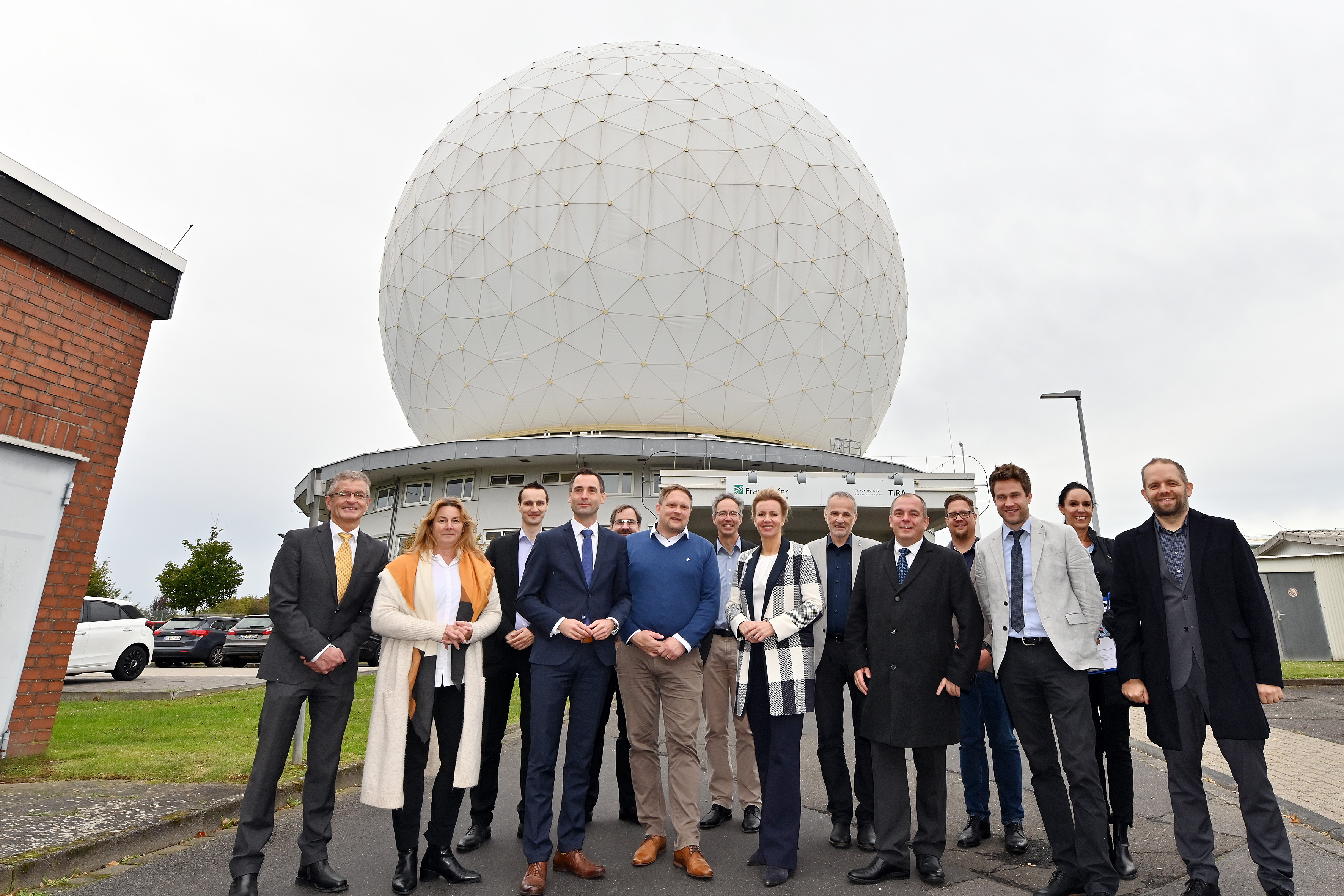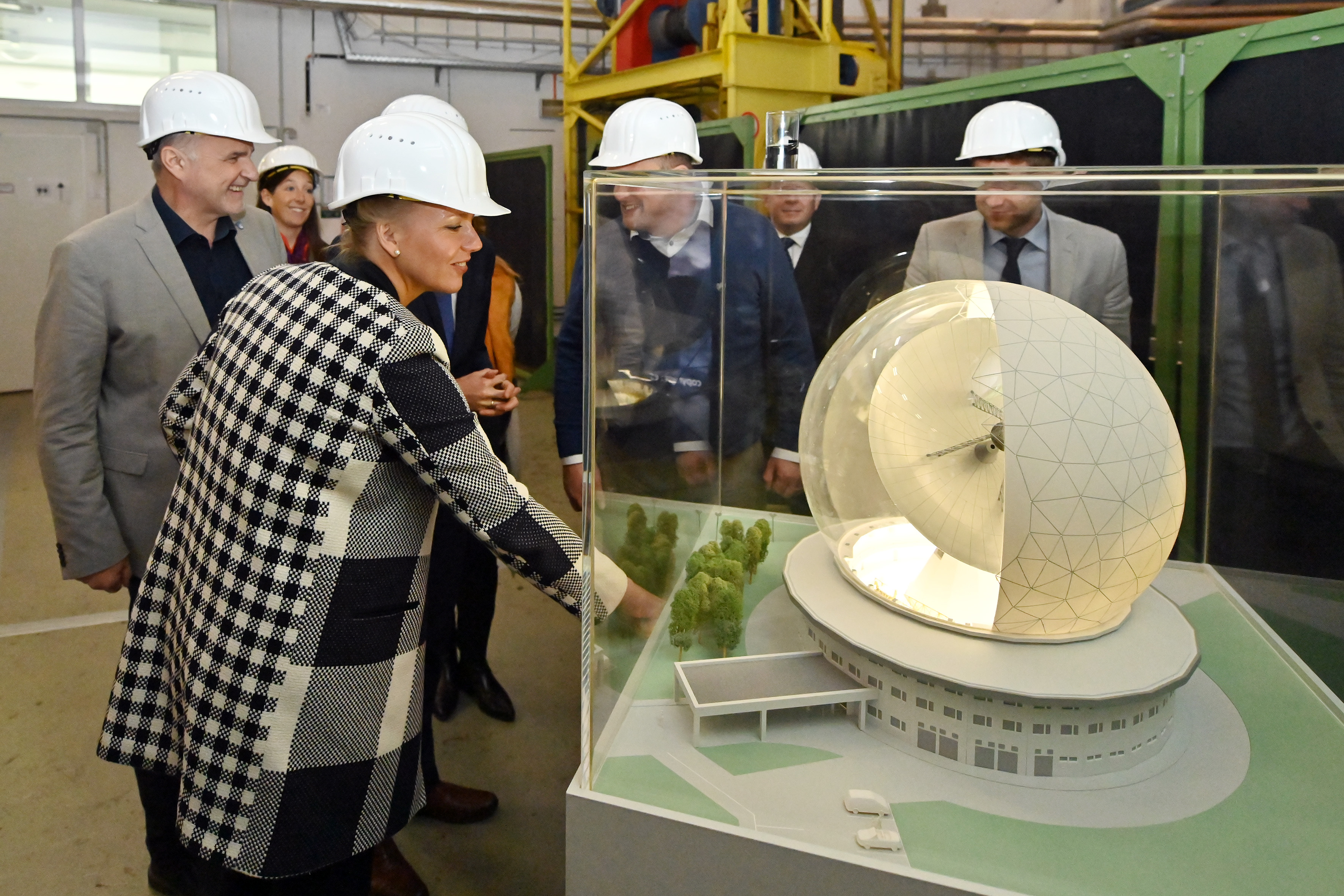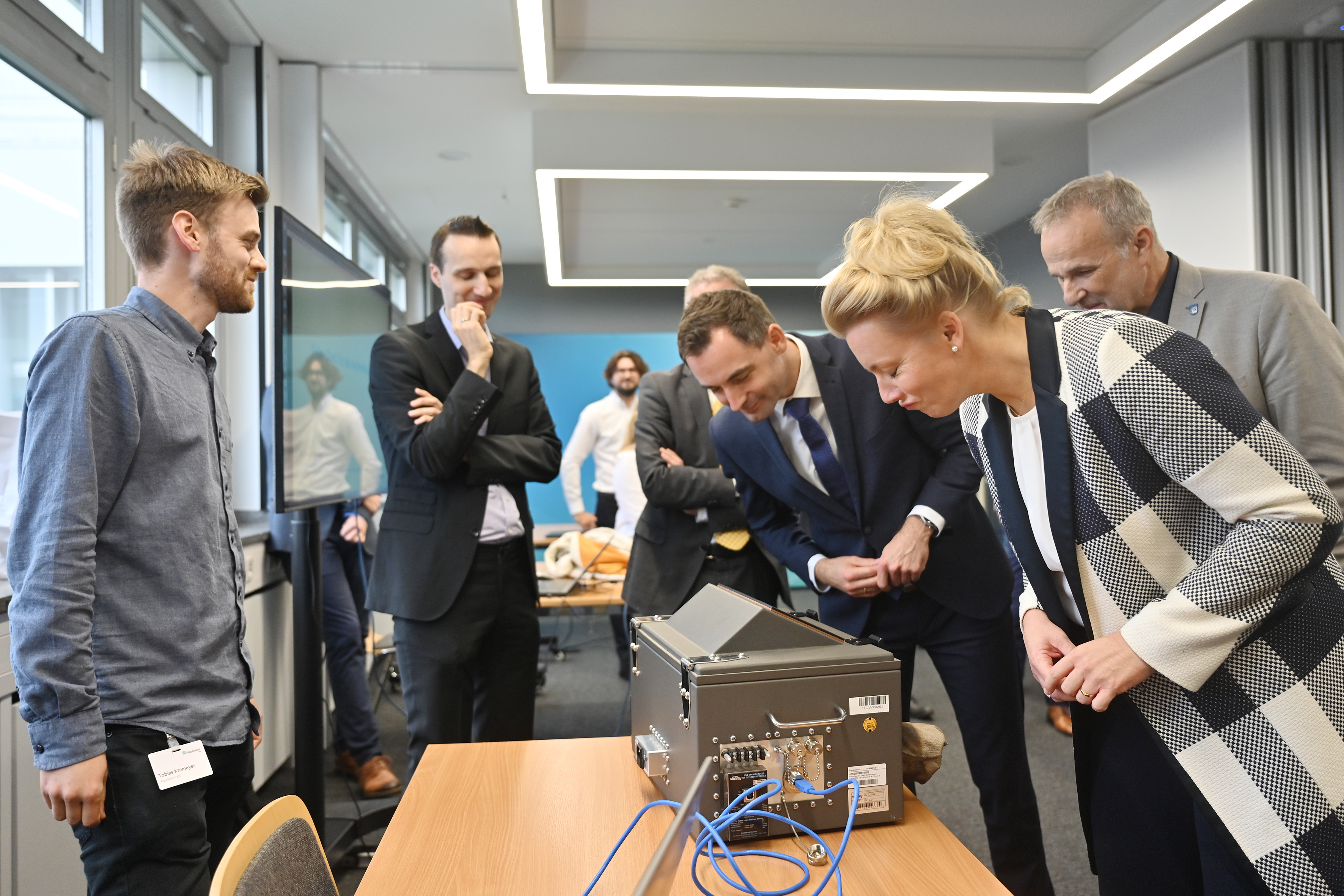Wachtberg researchers are bringing about improvements in safety — even in near-Earth space
The Fraunhofer name is synonymous with scientific excellence in North Rhine-Westphalia. Ina Brandes, North Rhine-Westphalia Minister for Culture and Science, paid a visit to Wachtberg on Monday to see this excellence for herself. The Fraunhofer Institute for High Frequency Physics and Radar Techniques FHR and the Fraunhofer Institute for Communication, Information Processing and Ergonomics FKIE opened up their laboratory doors to give the politician some fascinating insights into the research currently being undertaken by the scientists who work at the two institutes (almost 1,000 people in total).



Science Minister Ina Brandes said: »Conducting research within their institute and then transferring this knowledge to industrial applications is something that the researchers at the two Fraunhofer institutes in Wachtberg are highly dedicated to. The work of these scientists is an outstanding example of top-level research based right here in North Rhine-Westphalia, which will help to find solutions for the great challenges of our time. Exchanging knowledge between the scientific and corporate worlds will boost North Rhine-Westphalia’s reputation as both a scientific center and an industrial location.«
Prof. Peter Knott, institute director at Fraunhofer FHR, welcomed the minister to the institute’s second location in Wachtberg-Villip. The site’s modern office and laboratory buildings provide space for over 100 researchers who are working on industrial applications for high frequency and radar techniques with a focus on transferring innovations to small and medium-sized enterprises. As well as showing the minister examples of projects such as radar sensors for the steel industry and 3D-printed antennas, Section Head Prof. Dirk Nüßler also demonstrated the modern technological equipment that makes it possible to develop industry-compatible prototypes in line with customers’ specific requirements — from chip development to mounting technology and system integration.
The terahertz.NRW research network
Fraunhofer FHR also provided the minister with an update on terahertz.NRW, a project supported by the state of North Rhine-Westphalia and led by the institute with partners at the universities in Bochum, Duisburg-Essen and Wuppertal, and Fraunhofer IMS in Duisburg. The aim of the project is to bring together the leading figures in terahertz research with the aim of harnessing the technology’s disruptive — but as yet relatively untapped — potential for new mobile applications.
Safety in space thanks to radar
Additionally, the itinerary included a visit to the TIRA space observation radar — Fraunhofer FHR’s largest experimental system and the only one of its kind in Europe. With a diameter of 47.5 meters and a white radome that can be seen for miles around, TIRA is »a hallmark of the region that we are very proud of,« said Jörg Schmidt, mayor of Wachtberg, during the tour of the two institutes. Section Head Dr. Lars Fuhrmann explained to the visitors the importance of radar when it comes to observing near-Earth space and the significance of Fraunhofer’s TIRA and GESTRA radars in the context of safety in space. The special guests — who also included Member of the NRW Parliament Jonathan Grundwald alongside Ina Brandes and Wachtberg’s mayor — not only had the opportunity to visit the radar, but were also able to see it live in action as it rotated.
Research into cybersecurity
Fraunhofer FKIE focused primarily on the subject of »cybersecurity« when presenting its work to the visitors. Prof. Elmar Padilla, head of the »Cyber Analysis & Defense« department, spoke to the minister about Bonn’s unique role as a cybersecurity hub. As the professor explained, the former federal capital is home to a unique density of key stakeholders in the field — the German Federal Office for Information Security (BSI), the Cyber and Information Domain Service (KdoCIR), the Federal Network Agency and the Federal Commissioner for Data Protection, to name just a few — alongside universities and higher education institutions. The Cyber Security Cluster Bonn (CSCB) brings them together with many other partners and companies with the aim of advancing the field of cybersecurity.
Padilla finished off by presenting the Cyber Campus NRW and the Fraunhofer Cybersecurity Training Lab — two further initiatives in which Fraunhofer FKIE is heavily involved. Both institutions focus on providing training for the cyber and IT security experts who are urgently needed everywhere.
Insights into the work of a cyber forensics specialist
To round off the visit, the guests were given a brief but comprehensive insight into the work of a cyber forensics specialist. Three FKIE scientists, whose expertise is regularly called upon to support investigations by security authorities such as the BSI, the federal police force or the Federal Office for the Protection of the Constitution, gave a practical demonstration of the methods used to uncover botnets or to identify the perpetrators of hacker attacks. In a particularly thought-provoking live demonstration, the researchers showed how they could exploit a security vulnerability they had discovered to send unauthorized warning messages to cell phones on a massive scale.
